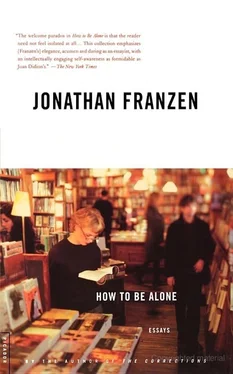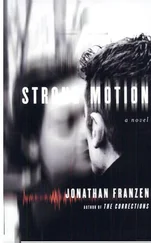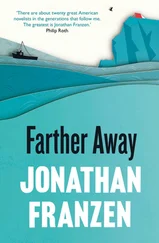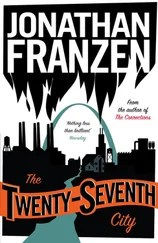Campbell also faxed copies of the team’s final report to the Washington office of Senator Paul Simon, who had heard about her from Patrick O’Connor. Simon and his fellow Illinois senator, Carol Moseley-Braun, sent a joint letter to Marvin Runyon urging him to visit Chicago personally. Runyon, afraid of walking into a hornet’s nest, refused. Simon then called him at his home in Nashville (Runyon commutes by jet to Washington) and persuaded him to reconsider. Runyon dispatched his second-in-command, chief operating officer Joseph R. Caraveo, along with two other national vice-presidents, to prepare the way for his own visit.
On the Friday before Runyon’s visit, in one of those “accidents” that fuel paranoid conspiracy theories, twenty thousand pieces of mail bearing dates between 1979 and 1992 turned up in garbage cans behind a house in southwest Chicago; the retired carrier who had owned the house confessed that because he was unable to finish his route on time he had habitually taken his work home with him. On that same Friday, the police found a two-hundred-pound pile of fresh mail burning in a walkway beneath a rail viaduct. The guilty carrier, Darnesia Bullock, later explained that, with Caraveo conducting random inspections throughout the city, carriers had been under intense pressure not to leave mail behind in stations. The walkway had presented itself to her as a logical repository. Bullock conjectured that homeless people had set fire to the mail.
The city was in a fractious mood when Runyon arrived. His visit culminated in a “town meeting” at the Broadway Armory, in the Uptown district. Officially the meeting was a City Council Finance Committee hearing on the economic impact of poor mail service. Runyon, Mason, and the Chicago mail-processing director, Celestine Green, sat at a table with the air of defendants at a war-crimes tribunal, facing an ocean of accusers and a sprinkling of defenders. While members of the Progressive Labor Party passed out flyers demanding eight hours’ pay for six hours’ work, Runyon offered his apologies to Chicago and promised to send in a task force to clean things up. Witnesses at the open mikes told caustic jokes and sang derisive songs. Marilyn Katz articulated her frustration, and Debra Doyle related a soundbitesized story of missing gas bills — one that was rebroadcast on TV for months afterward.
After Runyon left Chicago, a twenty-seven-member task force of skilled managers from around the country arrived to continue the work of the unthanked and largely unpromoted Service Improvement Team. Familiar promises were made as if for the first time, and media attention waned temporarily. But Jimmie Mason’s days as postmaster were numbered.
On April 25, Van H. Seagraves, the publisher of the Business Mailers Review , broke the story that Celestine Green had spent two hundred thousand dollars of maintenance funds to refurbish her office suite with hardwood kitchen cabinets, a marble bathroom, and an air conditioner for each of the suite’s seven windows. Rumor had it that word of the renovation quite literally leaked out when water from Green’s whirlpool bath came through the ceiling of the express-mail unit, two floors down. What made things worse was that by the end of 1995 the entire Central Post Office was to be vacated. Green’s misjudgment was so egregious that postal management in Washington had no choice but to remove her. While they were at it, on May 3 they removed Ormer Rogers and Jimmie Mason. This being the Postal Service; it was all done gently. Although Rogers received a demotion, none of the executives took a cut in pay or benefits. Rogers was sent to Kansas City, Mason to South Carolina, and Green to the southern suburbs of Chicago, where her husband manages the processing plant.
With Runyon’s task force at work in Chicago and the top managers gone, the cloud of fallout drifted east toward Washington. At congressional hearings held in early June, members of the board of postal governors — the presidentially appointed overseers of the Postal Service — expressed contrition and anger. Marvin Runyon announced yet another reorganization of the postal hierarchy, reuniting Delivery with Processing, divisions that he’d divorced in 1992. The reorganization drew fire from U.S. Representative William L. Clay, who noted that only one of ten new regional vice-presidents was black, and it apparently exhausted the patience of one postal governor, Robert Setrakian, who privately called on his fellow governors to remove Runyon before the Postal Service fell apart altogether. The sense of crisis deepened in July, when the Washington Post reported that postal inspectors had found millions of pieces of mail in four trailers at a processing plant in suburban Maryland, which was unable or unwilling to do its daily job.
In each of these events, the fall of the Chicago post office resonated. When Debra Doyle met Gayle Campbell, the boundary between two worlds had been breached. Doyle brought Campbell to Nicodemus, who in turn opened the postal world to the Chicago public; with the arrival of Marvin Runyon from Washington and Eye to Eye with Connie Chung from New York, it became inevitable that heads would roll.
A coda to the fall was provided on Saturday, May 7, when firefighters responding to an electrical fire in a condominium in Palatine Township, a northwestern suburb of Chicago, found their access to the attic blocked by a wall of letters and parcels in the master-bedroom closet. A stray bundle of mail fell on a fireman’s foot; it bore addresses on the North Side of Chicago. The haul consisted of 3,396 pieces of first-class mail (including one Visa card taken from its envelope but never signed or used), 1,138 pieces of second-class mail, 364 pounds of bulk business mail, and 1,136 compact discs. The condominium belonged to Robert K. Beverly, a seven-year postal veteran letter carrier attached to Chicago’s Irving Park station, who began taking mail home with him in his used Jaguar for fear of being disciplined for not completing his route. What’s mystifying about this story is that no one on his route is known to have complained about missing mail. His arrest took the Irving Park station completely by surprise.
The postal family tells me that the incident was an anomaly. It calls Beverly a bad apple or a sicko, his actions an indication of nothing but the darkness in his own heart. The family says the clustering of bad apples in Chicago this spring was adventitious. Publicity from one discovery led to others. Many of the misdeeds that came to light were unfresh. Things are no different in any other city.
When I recite these excuses to Gayle Campbell, she shakes her head grimly, like the hanging judge she is. She says that in a Service Improvement Team report in 1993 she flagged Beverly’s route as “a troubled case,” littered with old mail. She believes that there are other, undiscovered Robert Beverlys in Chicago. Having interviewed Beverly’s foreman (“the most lackadaisical, unconcerned gentleman I’ve ever met”) and the Irving Park station manager, she is able to explain the mysterious lack of complaints. “There were complaints,” she says. “But I know they didn’t keep a complaint log, because I gigged them for that. They didn’t have one complaint log for me. I addressed that issue. They had their feet up on the desk and they were talking about the ballgame. There were twenty people outside waiting to be serviced and two clerks at the window.”
THAT SYSTEMIC FAILURES could persist for ten years in the primary communication network for one of the country’s largest cities and financial centers, and that it took the combined impact of a maverick administrator, media attention, and a congressional delegation to force the system to address those failures, raises serious questions about the long-term viability of both the United States Postal Service and United States cities.
Читать дальше
Конец ознакомительного отрывка
Купить книгу












